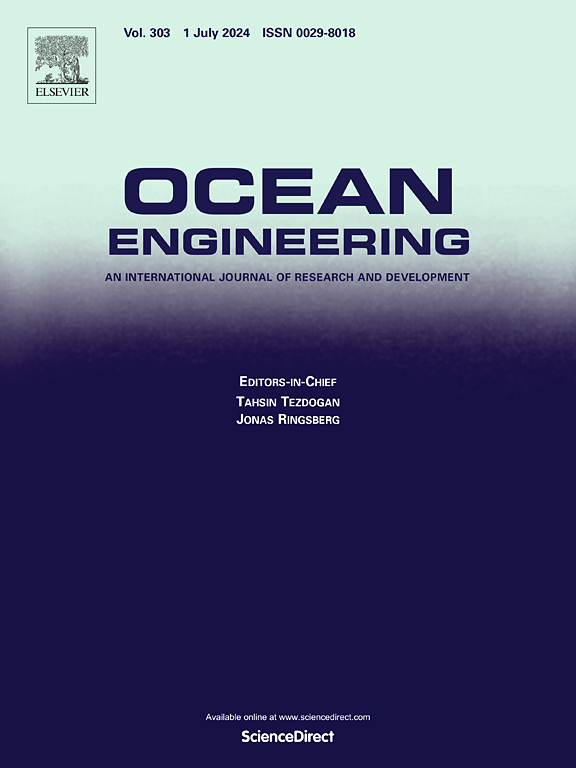Comprehensive analysis of flow-induced vibration and rotation characteristics of near-wall hydrofoil
IF 4.6
2区 工程技术
Q1 ENGINEERING, CIVIL
引用次数: 0
Abstract
This research delves into the flow-induced bending and torsional vibration characteristics of a near-wall hydrofoil. The analysis focuses on the impact of reduced velocity, wing-wall distance (H), and initial angle of attack (α0) on the hydrofoil's bending and torsional vibration behavior. Findings reveal that at low reduced velocities (3≤U∗≤6), the bending-torsional vibration amplitude is minimal. The lift coefficient's standard deviation initially rises and then falls, mirroring the trend in bending amplitude. Within the range 8≤U∗≤12, a "locked-in" phenomenon between bending and torsion induces notable changes in vibration and lift-drag coefficient. The lock-in range broadens with increasing wing-wall distance for the flexible hydrofoil. Bending displacement and torsion angle increase with higher reduced velocities and larger wing-wall distances. At small initial angles of attack (α0 = 5°), bending and torsional amplitudes are nearly zero. However, at medium angles (α0 = 10°, α0 = 15°), pronounced vibrations occur within the locked range. Larger initial angles (α0 = 20°, α0 = 25°) show differing effects on bending and torsional amplitudes with velocity. Overall, the standard deviation of the lift coefficient decreases notably for the flexible hydrofoil, maintaining a stable lift-to-drag ratio. Nevertheless, within the locked frequency interval, both the lift coefficient's standard deviation and the time-averaged lift-to-drag ratio experience sharp increases.
求助全文
约1分钟内获得全文
求助全文
来源期刊

Ocean Engineering
工程技术-工程:大洋
CiteScore
7.30
自引率
34.00%
发文量
2379
审稿时长
8.1 months
期刊介绍:
Ocean Engineering provides a medium for the publication of original research and development work in the field of ocean engineering. Ocean Engineering seeks papers in the following topics.
 求助内容:
求助内容: 应助结果提醒方式:
应助结果提醒方式:


